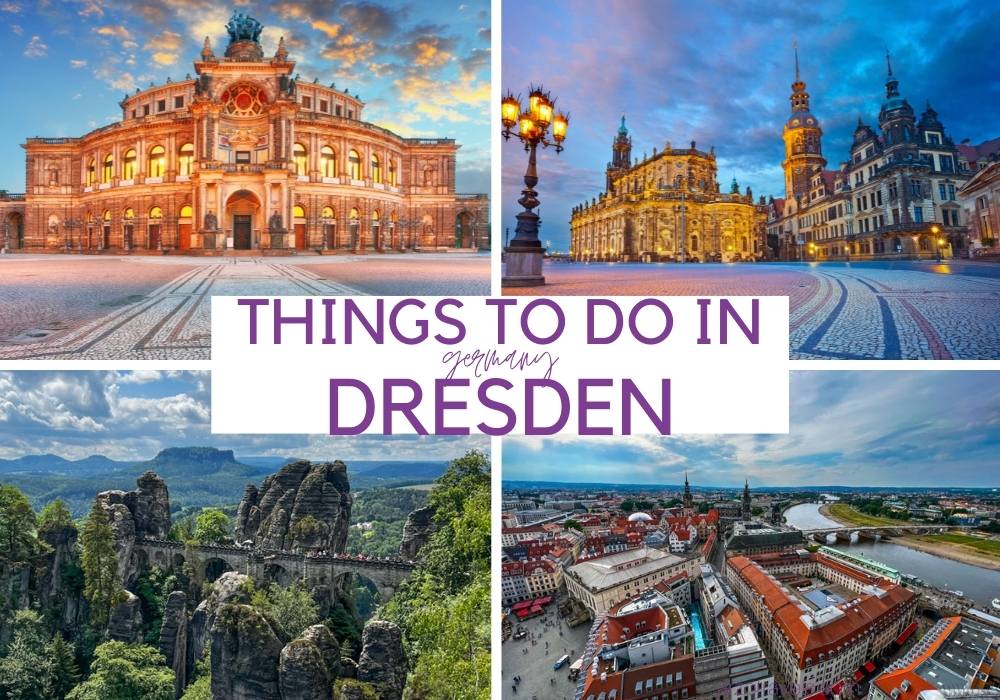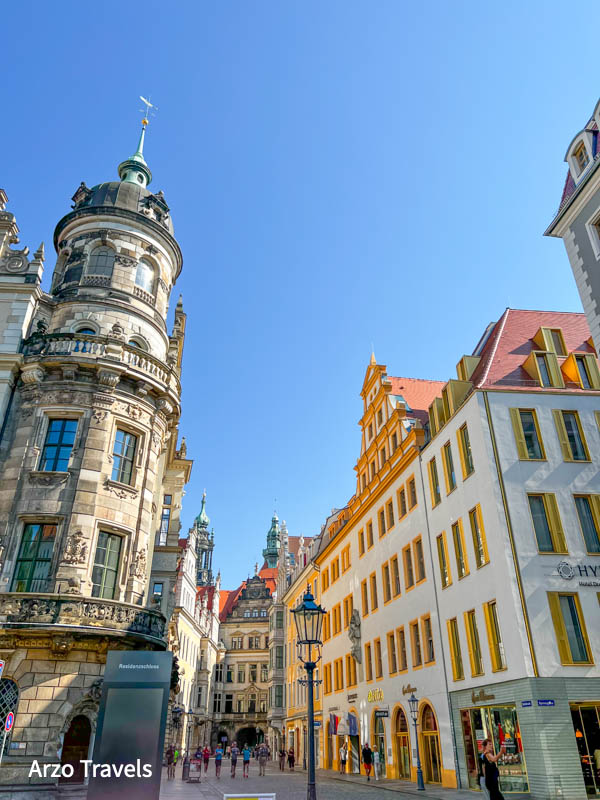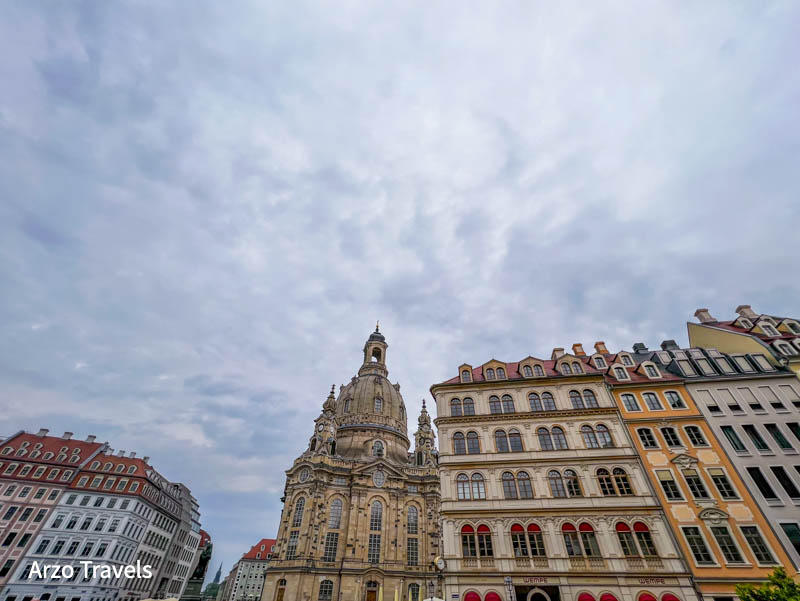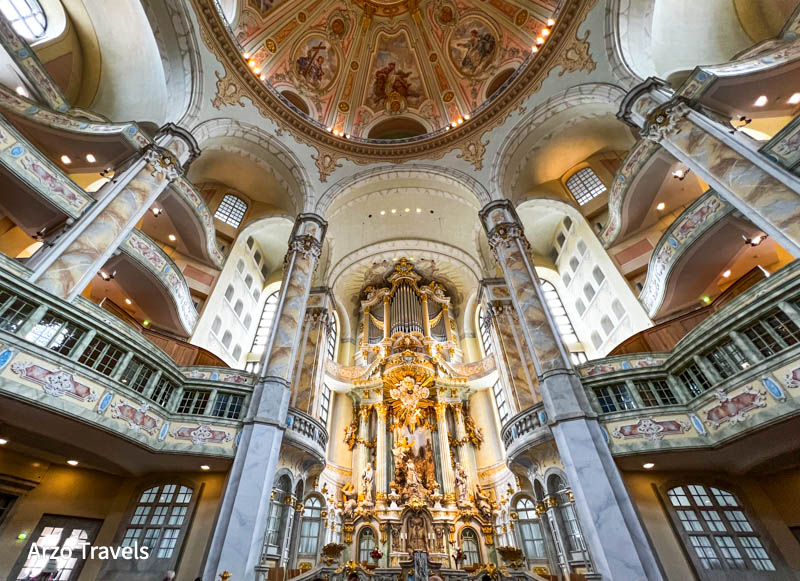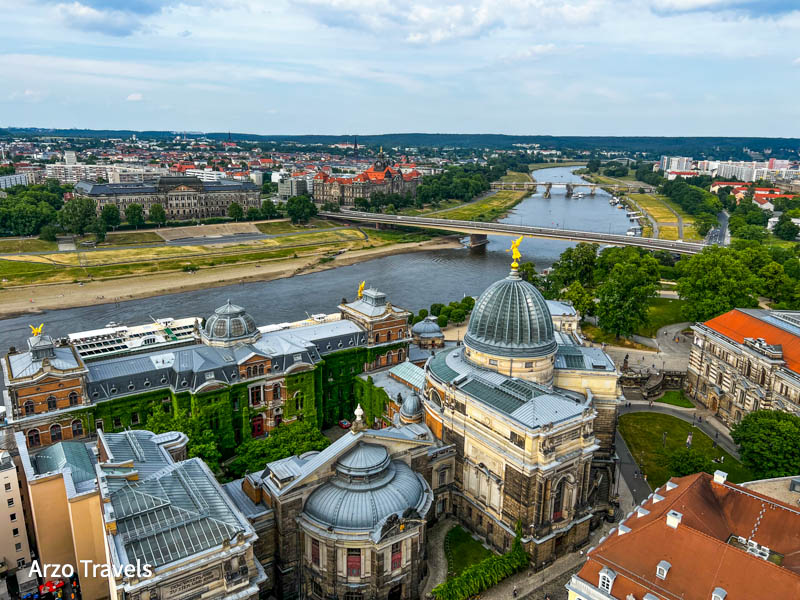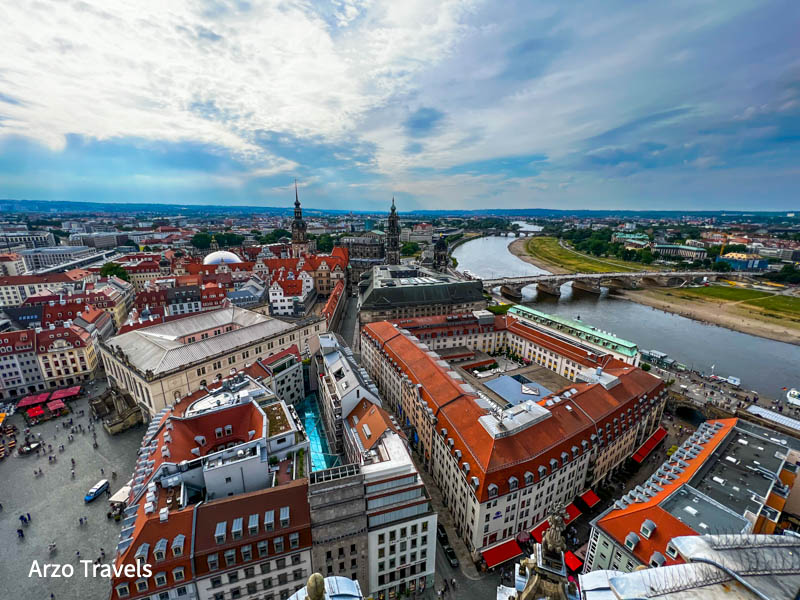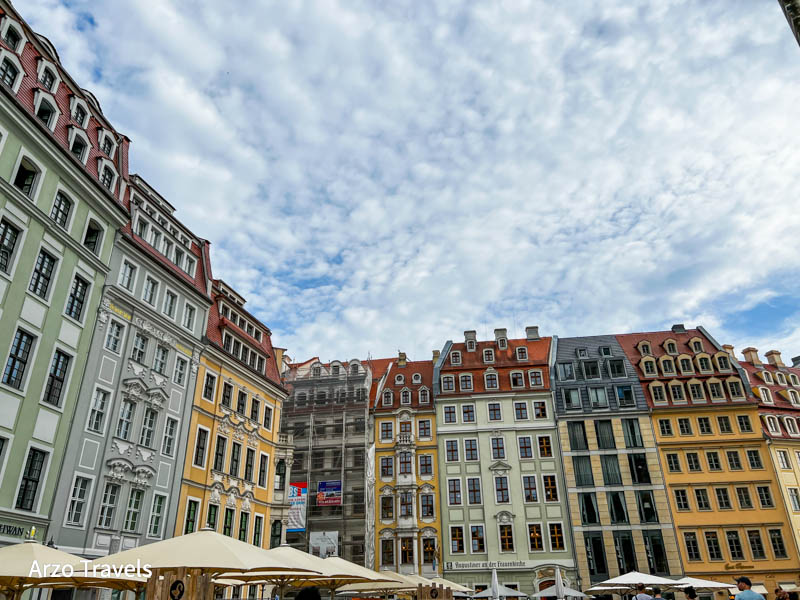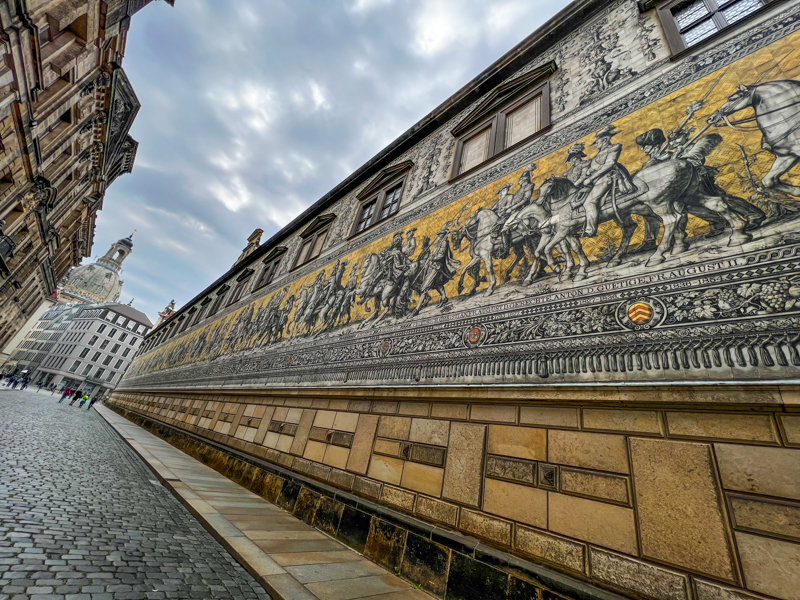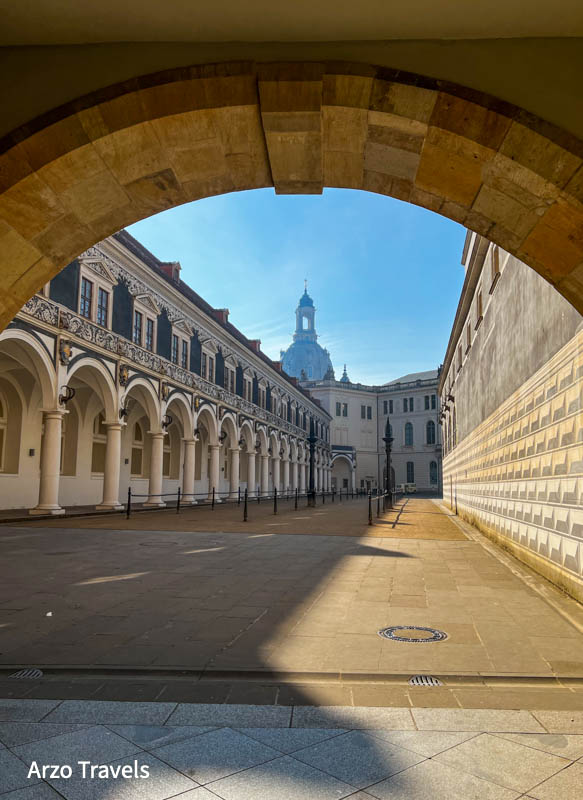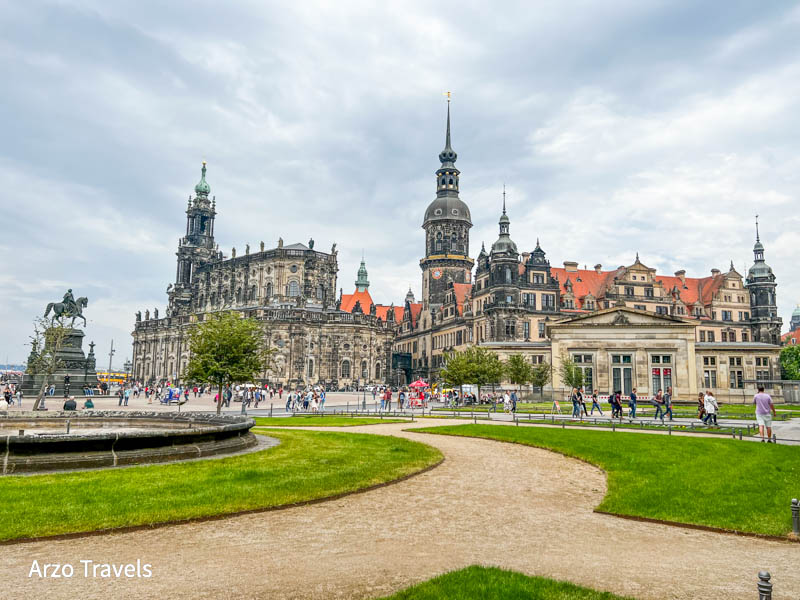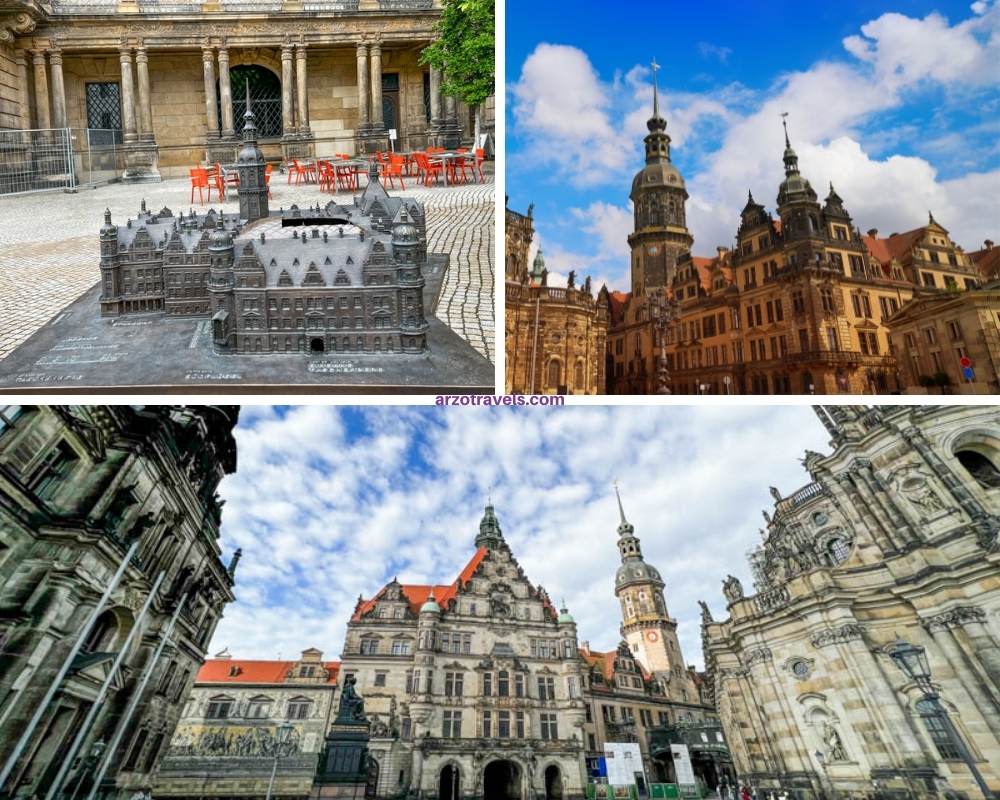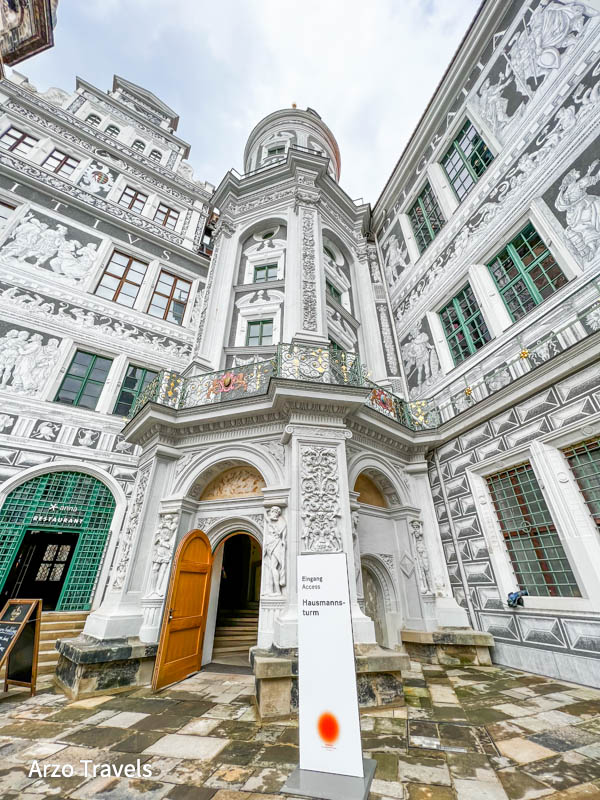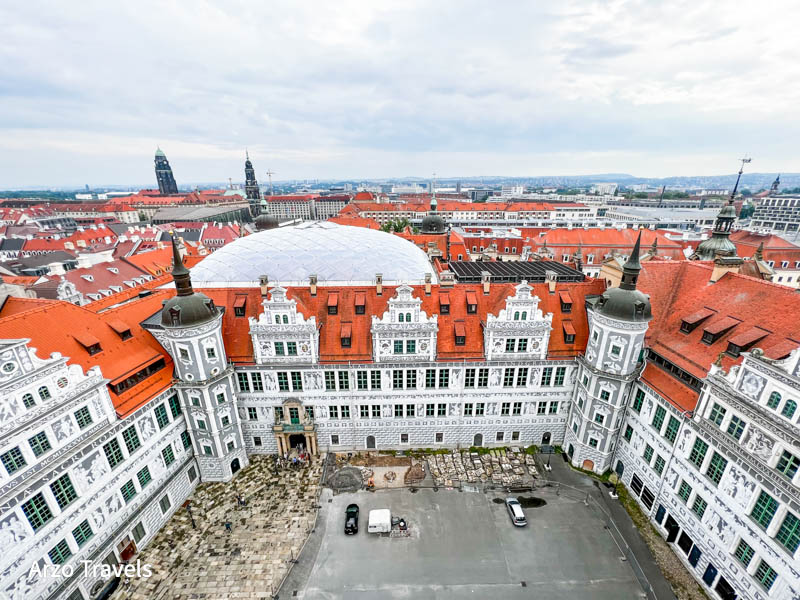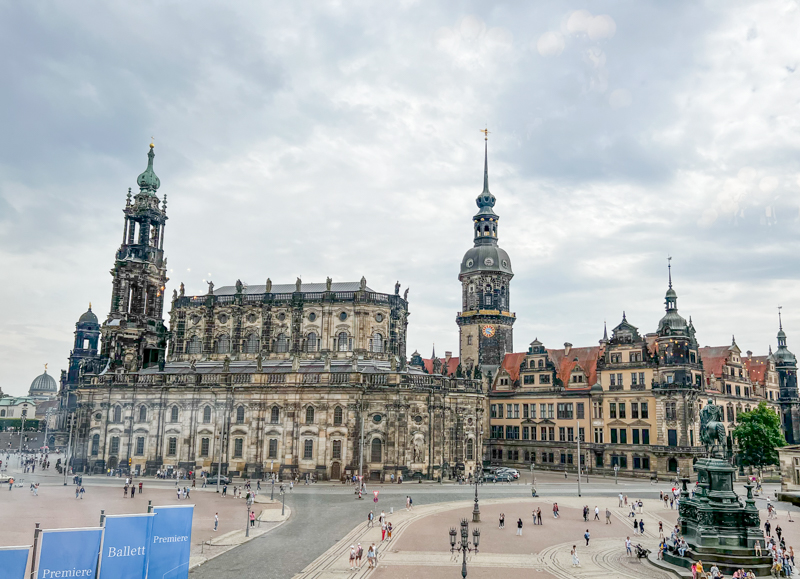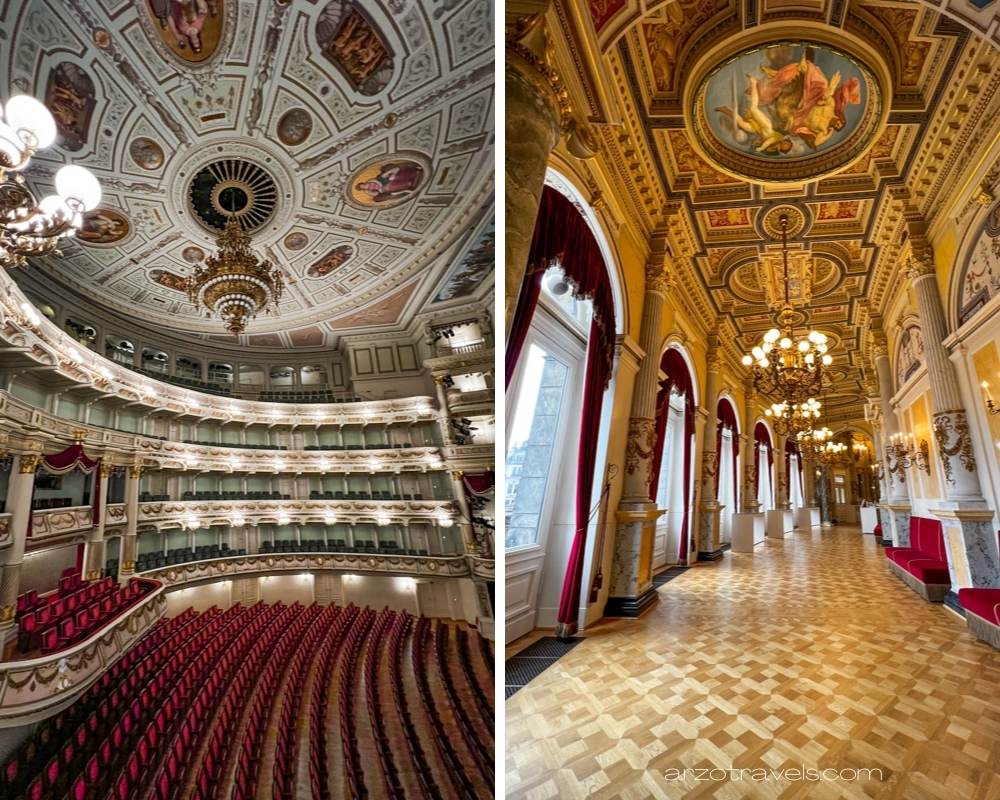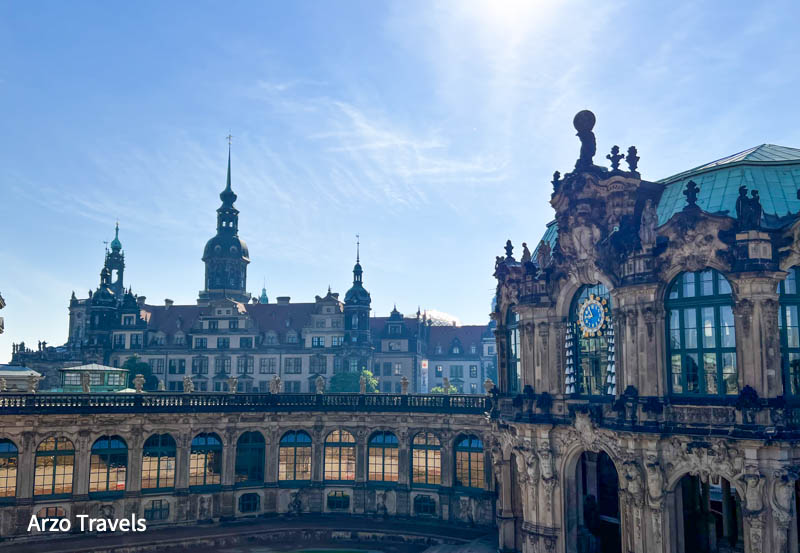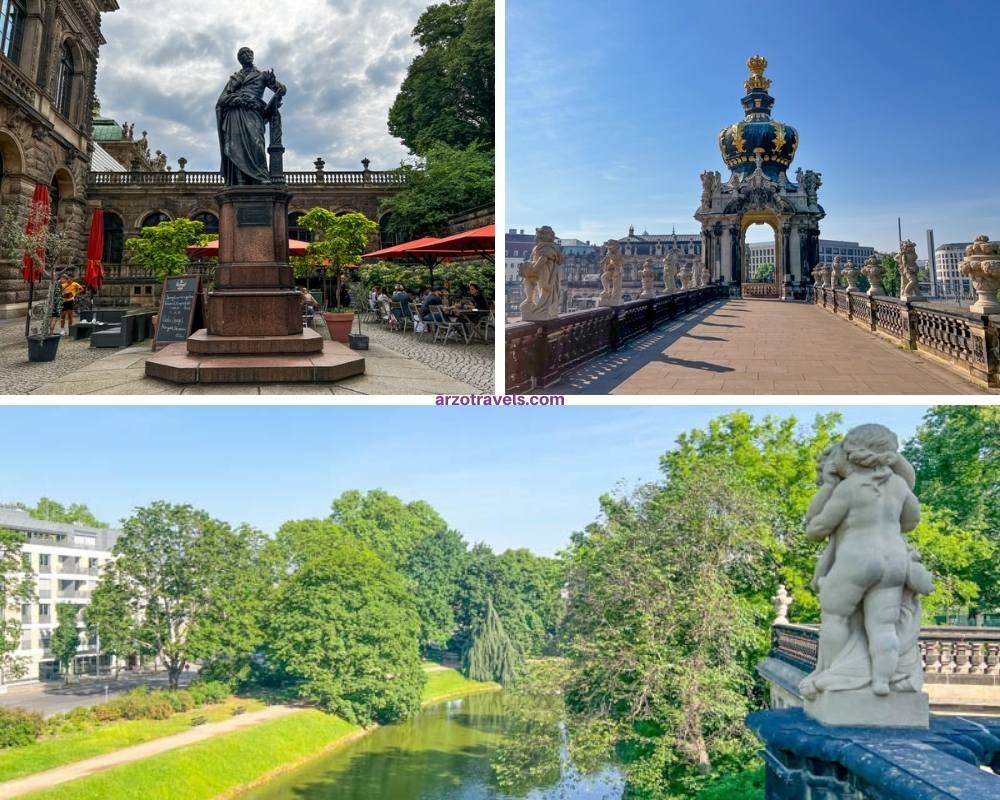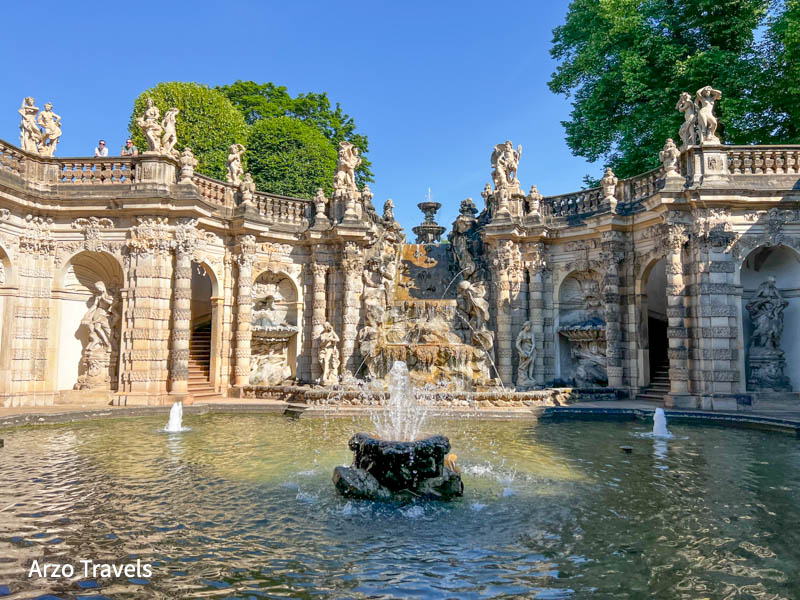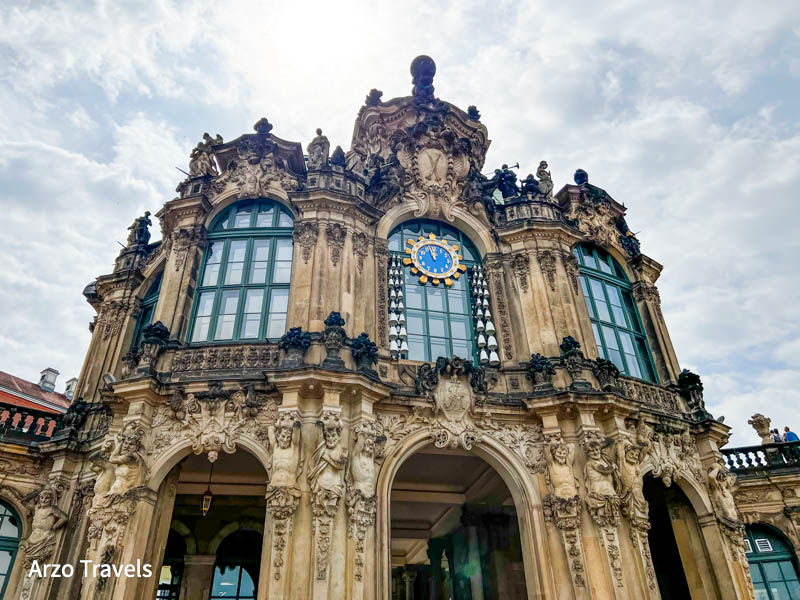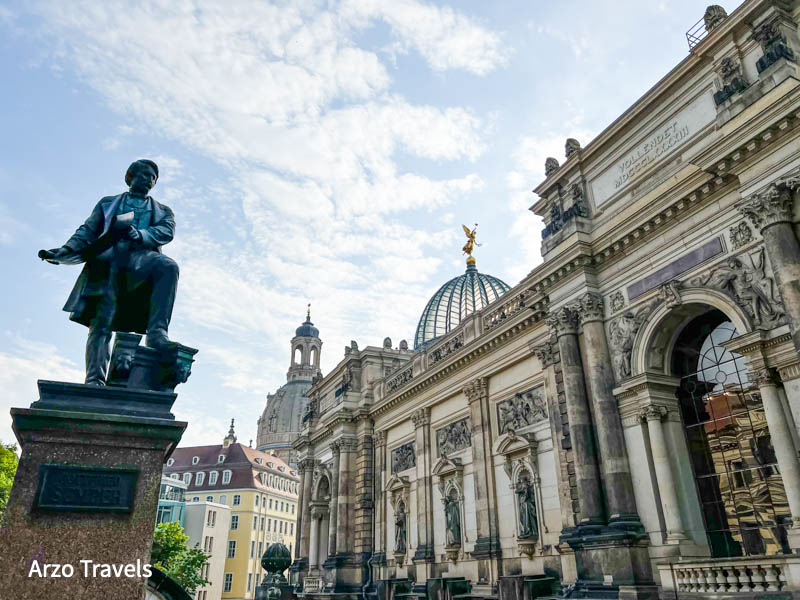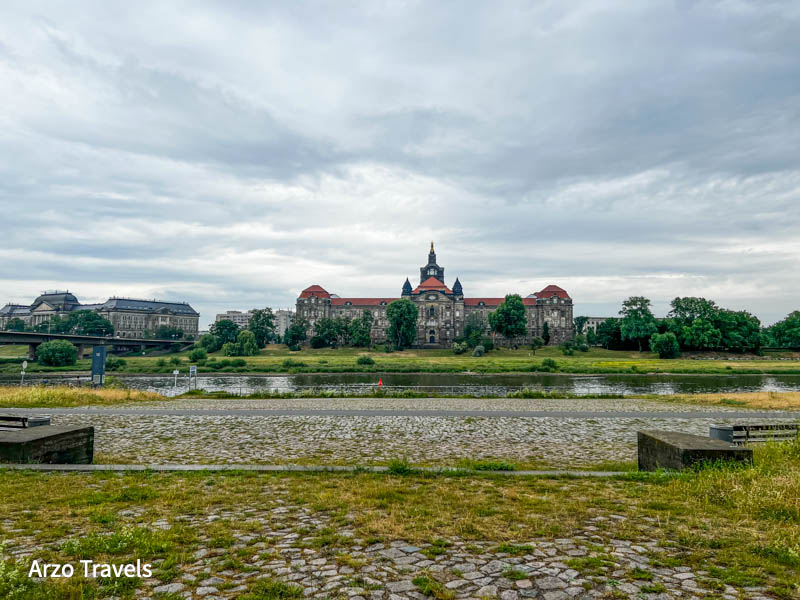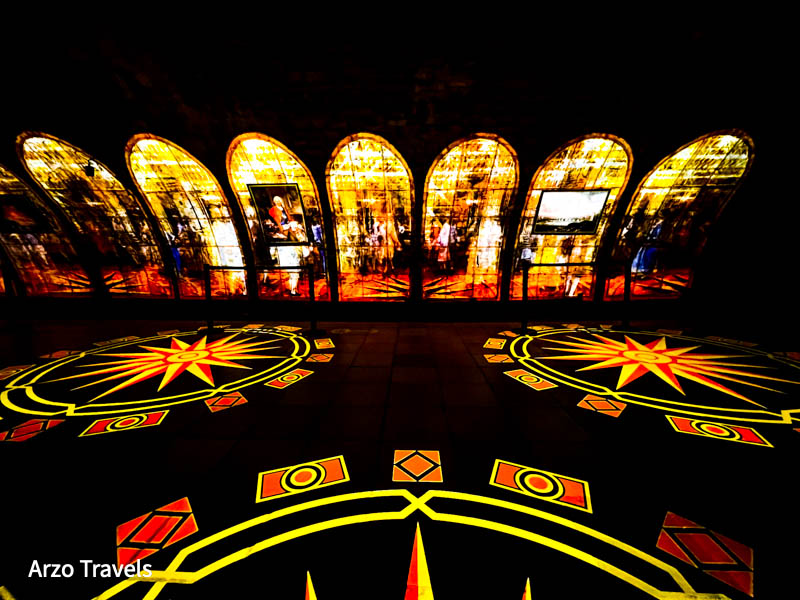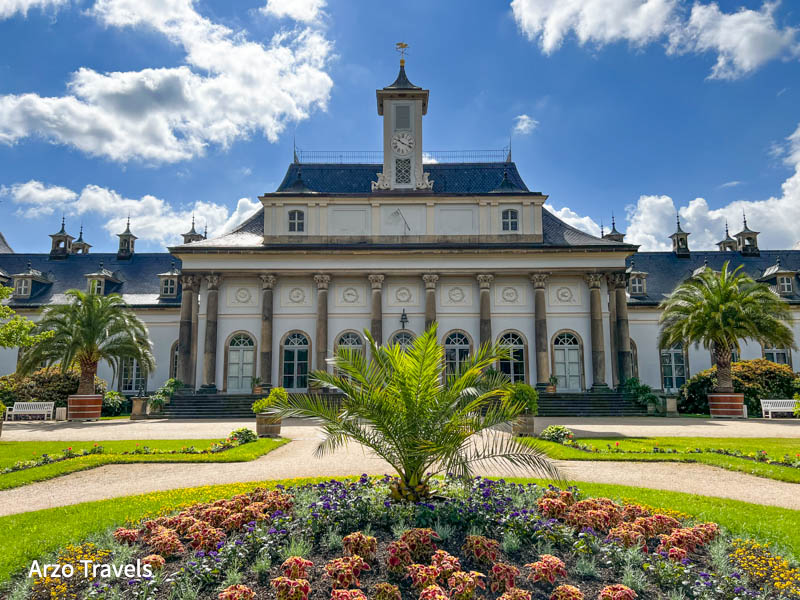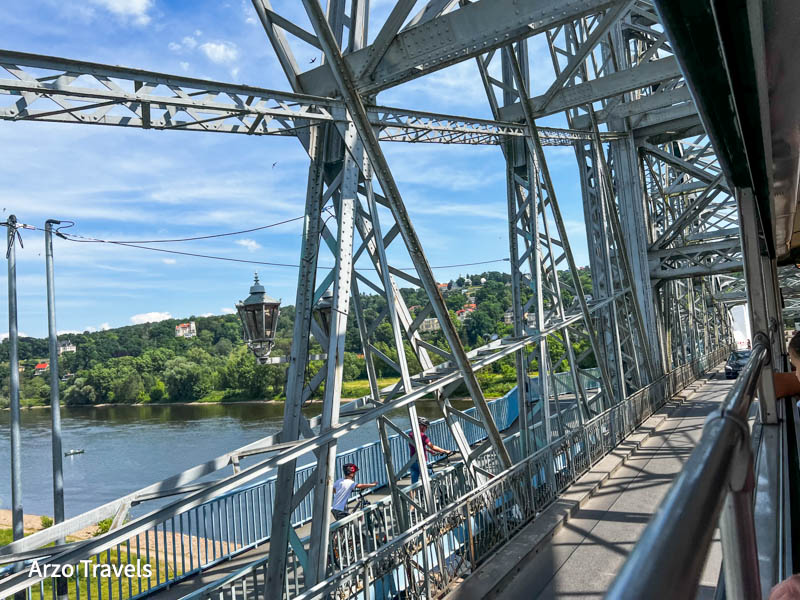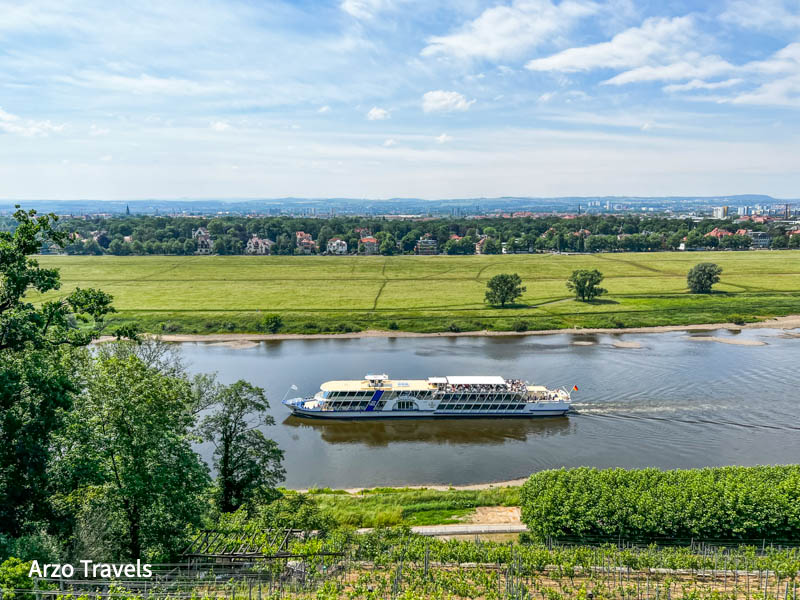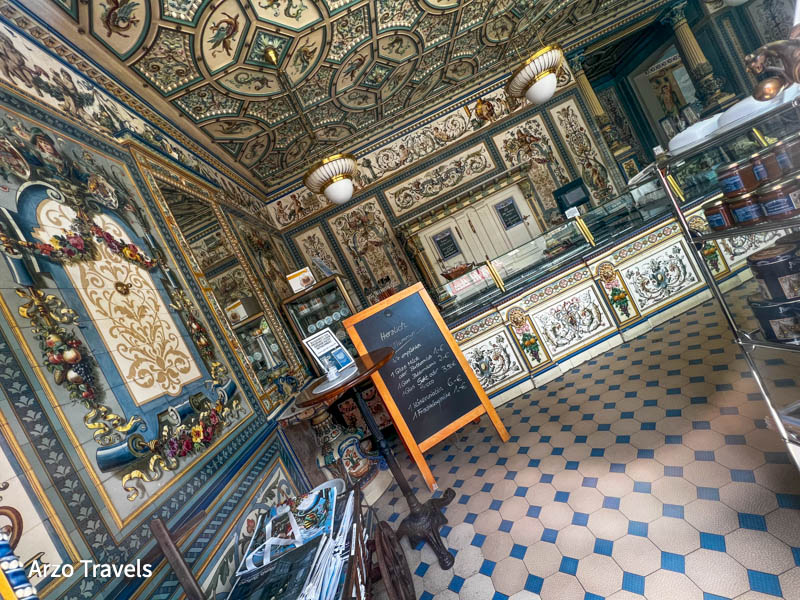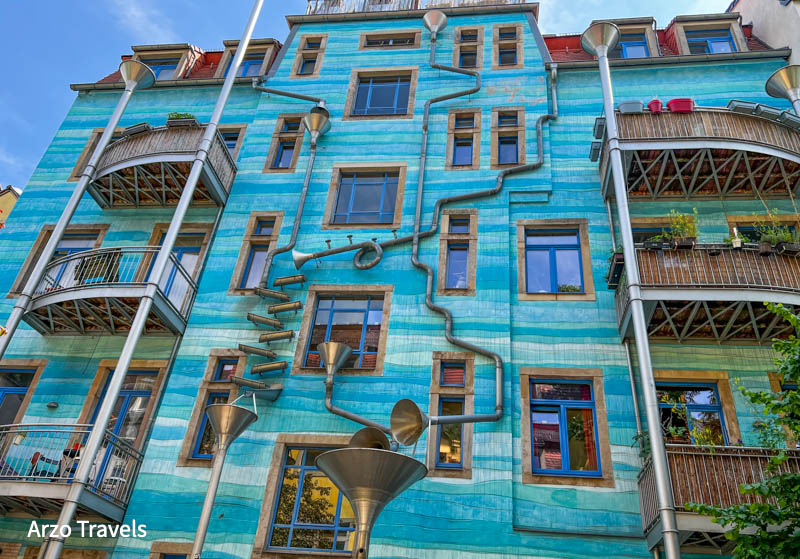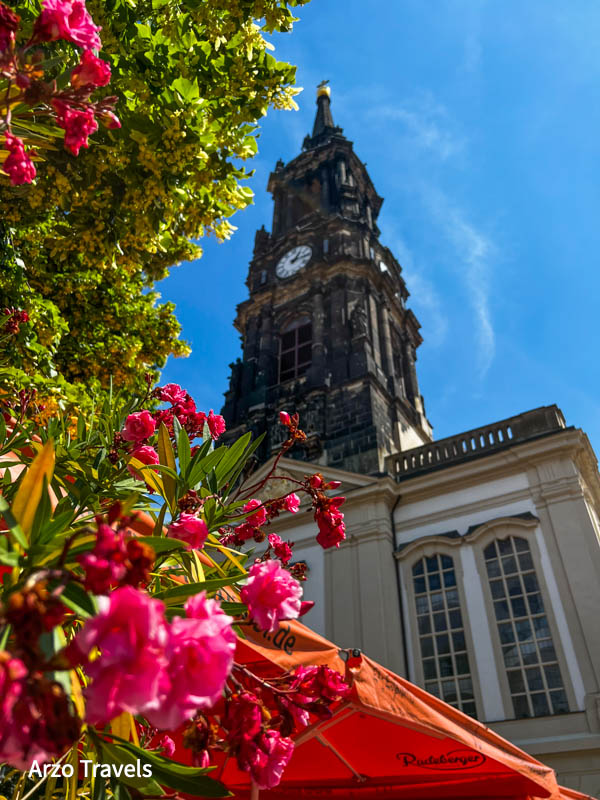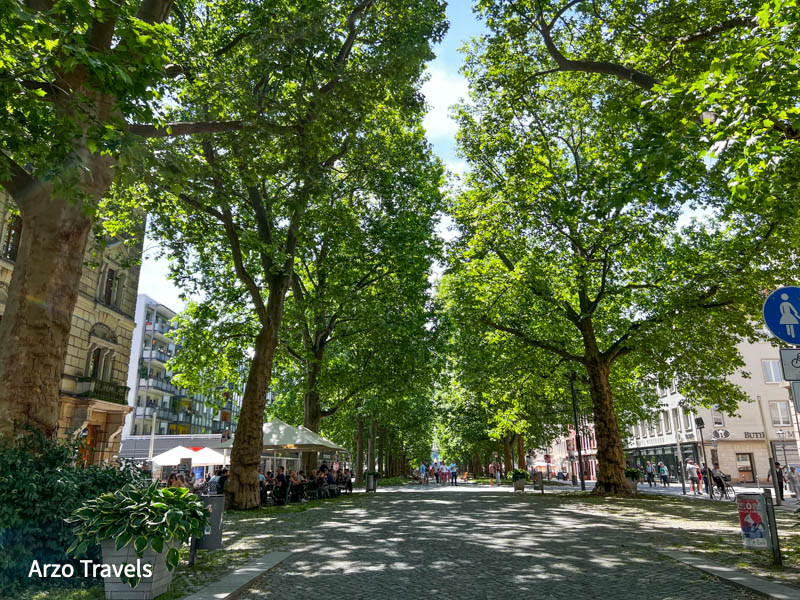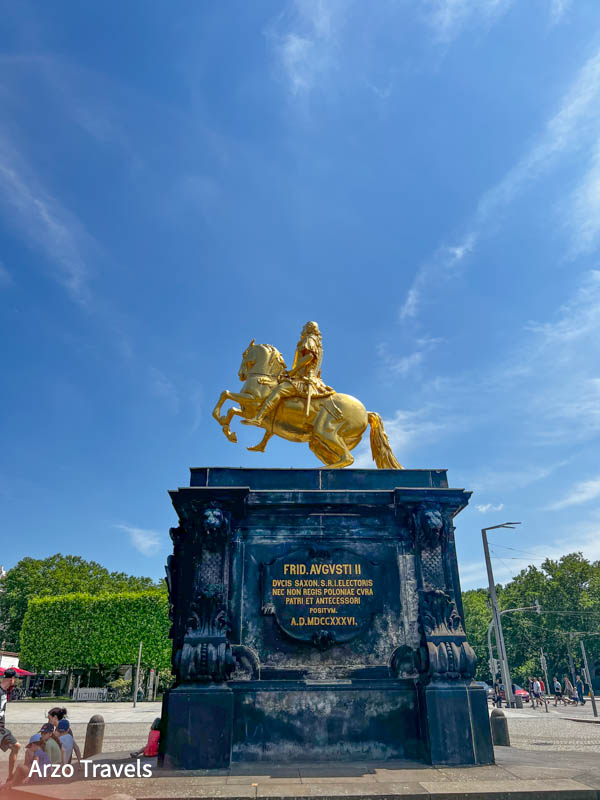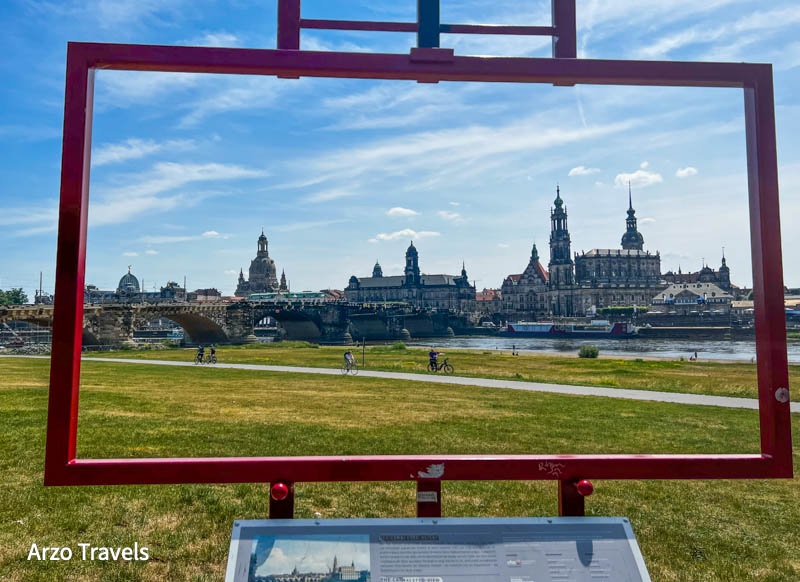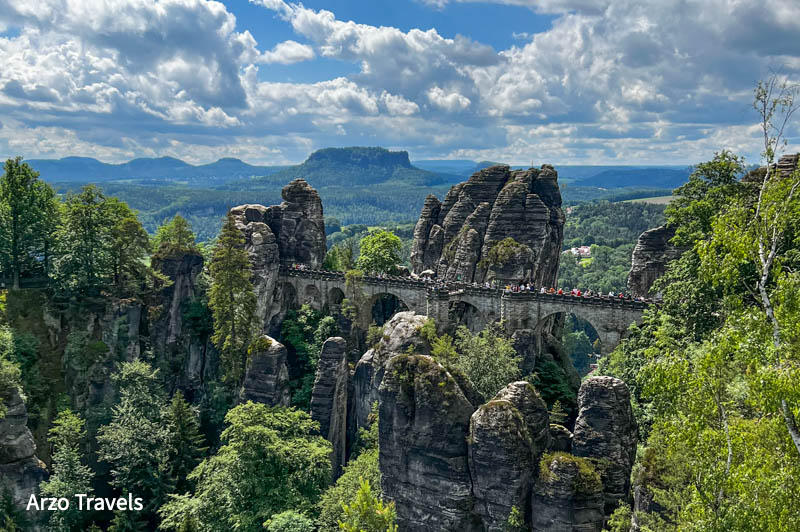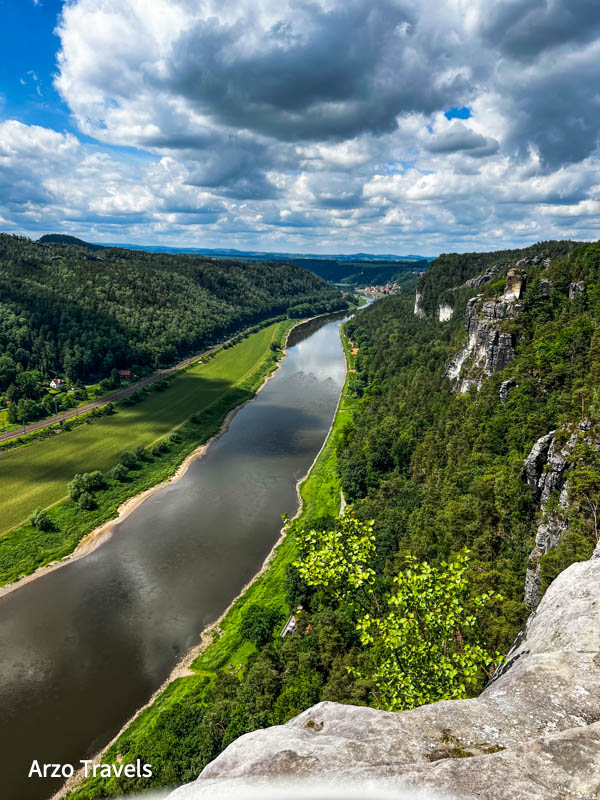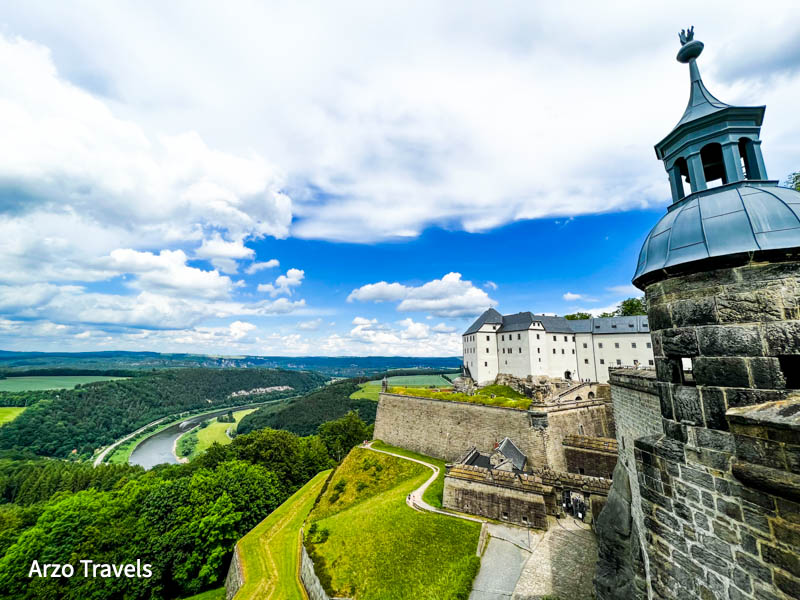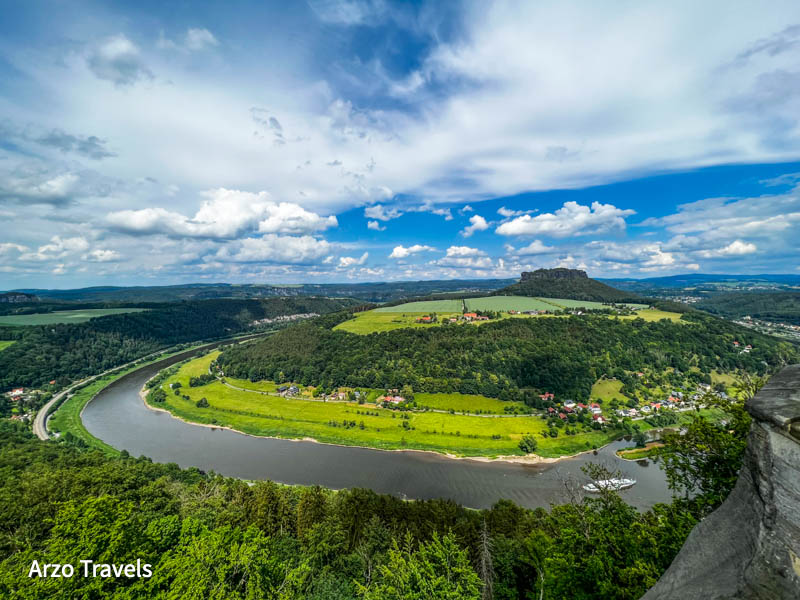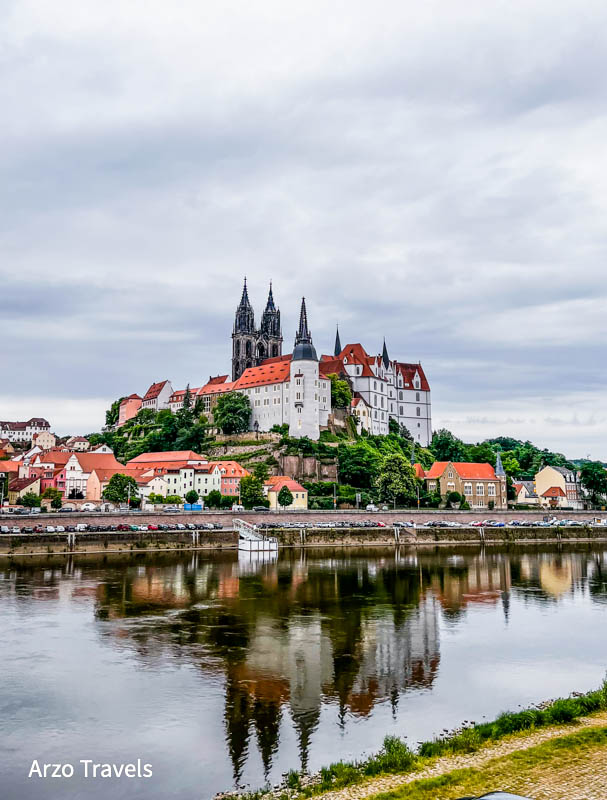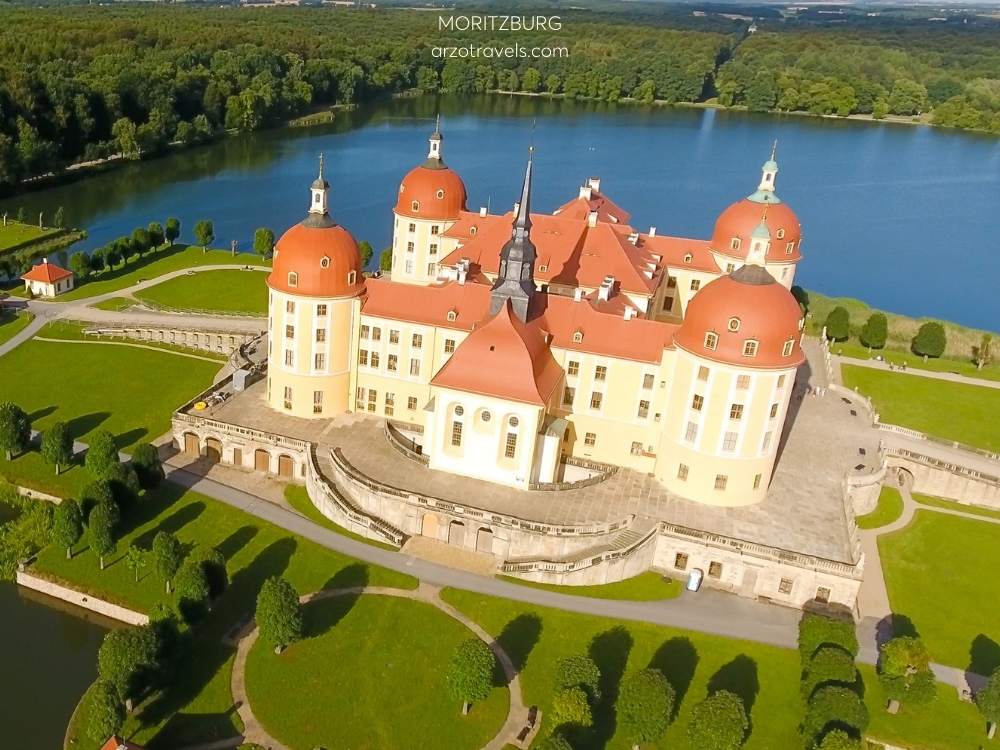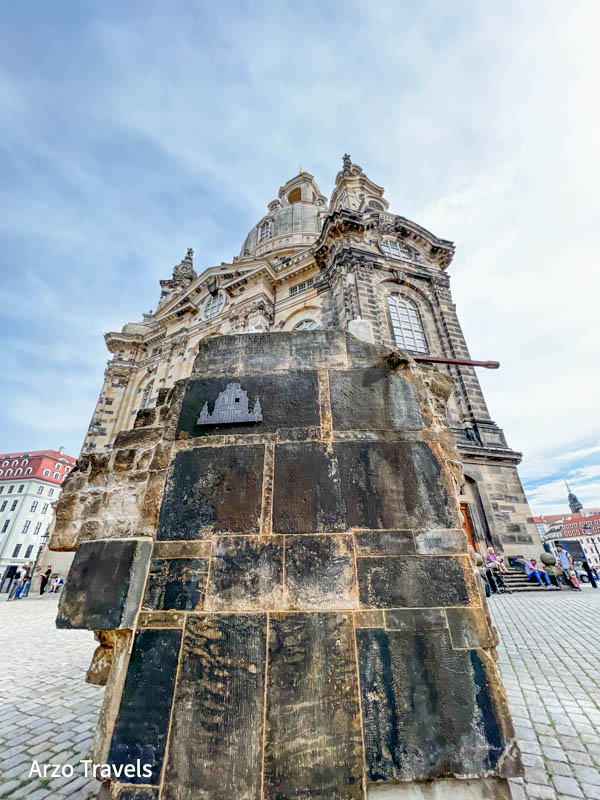WHAT TO DO IN DRESDEN IN 1-4 DAYS
If you are planning your Dresden itinerary, you might be wondering about the best things to do in Dresden. If so, then this post is for you. Here you will find what to do in Dresden along with many travel tips for a great trip – whether you stay 1 day in Dresden or longer.
As a German I have to say: Dresden is Germany´s most beautiful city! And it is a must-see in Germany.
And you are about to find out what Dresden activities I liked the most and at the end of the post, you will also find many travel tips for your itinerary in Dresden.
Disclaimer: This post contains affiliate links. This means I might earn a small commission when you buy a product/service via my link (at no extra cost to you). More about it here
DRESDEN ITINERARY FOR 1-4 DAYS
So, let´s start with Day 1 of your Dresden itinerary.
DAY 1 IN DRESDEN
There are several parts of the old town (Altstadt) and new town (Neustadt) that I will focus on, as well as the Dresdner Heide and Saxon Switzerland Let´s start with the old town in Dresden.
ALTSTADT
Get ready to explore the enchanting old town of Dresden, nestled on the left bank of the Elbe River. This treasure trove of history holds most of the city’s mesmerizing sights and is a major draw for travelers like you.
Although much of the town was destroyed during World War II, the city rebuilt its most significant landmarks.
Another reason I loved Dresden a lot was that everything is so conveniently close, you’ll only need to wander a few kilometers to experience most sights!
Church of Our Lady (Frauenkirche) + Dome Ascent Frauenkirche
Find out about the remarkable story of the Frauenkirche – the iconic symbol of WWII in Dresden! This beautiful and historic Protestant church, born from the ashes of its Catholic predecessor, came to life between 1726 and 1743.
This architectural gem didn’t escape the destruction of World War II. Thanks to dedicated efforts, the Frauenkirche proudly stood tall once again in the 1990s and was warmly welcomed back with a touching reconsecration in 2005.
Nestled in the charming Neumarkt, the breathtaking Frauenkirche captivates attention with its grand stature and impressive design, both inside and out! As you admire its exquisite façade, keep an eye out for the darker stones, which are original pieces masterfully blended into the reconstruction.
Find a massive rock in front of the church – it once belonged to the Frauenkirche but tumbled down during the airstrikes. Today, it stands as a poignant symbol of the past. Step inside this replica church and witness history brought back to life!
My tip: climb to the top for some breathtaking panoramic views of beautiful Dresden. I am all about gorgeous views, so this was one of the highlights in Dresden.
- The church is free to visit. Check out opening hours before your visit (there might be weddings and opening hours might change).
- You can also do guided tours of the church.
- The Dome ascent is 10€. There are almost 300 steps to the top, but you could use an elevator and then only have to climb another 123 steps.
Neumarkt Square – Neumarkt Platz
Then explore the Frauenkirche at the bustling Neumarkt Square.
Though I have seen quite a lot of German squares, this is probably one of my favorites. This lively hub surpasses size expectations for a German square and here you will also find many colorful pastel buildings.
Transport Museum (Verkehrsmuseum)
At the Neumarkt Square lies a must-visit for transportation enthusiasts – the renowned Transport Museum! Showcasing an impressive collection of vehicles spanning across railways, seas, roads, and airways, it’s the perfect haven to escape into during those pesky rain showers.
Though I did not visit I am pretty sure, this is also very popular for kids.
Fürstenzug (Procession of Princes) + Stallhof (Stable Yard)
Stroll over to the Fürstenzug, just a short hop away from the museum and Neumarkt. I was awestruck by the impressive 101-meter tiled masterpiece showcasing Saxony’s royal lineage!
Nestled behind the Royal Palace and right outside the Stallhof, it’s an extraordinary sight.
A giant, stunning mural made entirely of porcelain tiles – That’s exactly what you’ll find in Dresden, where once-vibrant artwork on a castle wall found new life on Meissen porcelain tiles between 1904-1907. As the largest porcelain mural in the world, it features a jaw-dropping array of over 24,000 tiles!
Standing proudly for generations, a sgraffito depicting Saxony’s Wettin Dynasty marked its 800th anniversary on the Langer Gang wall. This artwork was created as an enduring tribute to this royal family and their momentous achievement!
This piece showcases the faces of 35 margraves, princes, and kings, plus 59 scientists, artisans, craftsmen, and farmers, weaving a rich tapestry of Saxony’s history.
I found the guided tour I joined very helpful in learning more about the influential rulers and the history of Saxony.
Have a quick look at the intriguing Stallhof, tucked away behind the Fürstenzug! This 16th-century courtyard boasts a history rich with games and tournaments, and now magically transforms into a festive wonderland during December, offering Christmas markets for all to enjoy!
It actually is part of the royal palace complex, but I felt that many people skipped it even though it is worth going through.
- Both attractions are free to visit and are open 24/7.
Royal Palace (Residenzschloss)
Have you ever wondered about the abundance of palaces and castles in Saxony, particularly Dresden’s Royal Palace? Well, it has an intriguing history as the center of power for Saxon princes and kings!
The castle complex dates back to the 14th century, with its grand four-wing palace structure evolving in the 15th century.
Did you know that the remarkable baroque building, which stands proudly today, actually faced destruction twice in its lifetime?
First in 1701, with a devastating fire, but thanks to Augustus the Strong, it was reconstructed to its former grandeur. The second time, WWII air raids reduced almost 500 halls and rooms to rubble, taking with them priceless interiors.
Reconstruction efforts kicked off in 1985, transforming it into a stunning cultural hub that boasts multiple museums, an awe-inspiring tower with panoramic views, and much more!
These are the museums of the Staatliche Kunstsammlungen Dresden, inside the Royal Palace.
- Royal State Apartments of August the Strong the Porcelain Cabinet
- Cabinet of Prints and Drawings
- Coin Cabinet
- New Green Vault (Neues Grünes Gewölbe)
- Renaissance Wing
- Giant´s Hall of the Armory
- Turkish Chamber
There is also the Historical Green Vault- the museum was founded in 1723 by Augustus the Strong, and it features a variety of exhibits in styles from Baroque to Classicism.
- Tickets for all museums cost 14€
- For the Historic Green Vault, you need an extra ticket, which is an additional 14€. When I visited, tickets for the day were already sold out.
- On busy days (bank holidays or the main season), buy your tickets in advance if you want to visit this museum.
Visiting all the museums would probably take 2 days or so. If you have a limited amount of time, then you have to focus on a few museums (or skip them altogether).
One of my highlights was the Schlosshof courtyard within the Royal Palace! Marvel at the stunning architecture of the surrounding buildings, which have been thoughtfully restored after past devastation.
- You can also climb the 232 steps of the Hausmannsturm to enjoy some great views of the courtyard and the surroundings.
- There is an entrance fee of 5€ for the Hausmannturm – I think the views are worth it.
Sanctissimae Trinitatis Cathedral (Katholische Hofkirche)
Don’t miss the iconic cathedral nestled between the mesmerizing Semperoper, the magnificent Zwinger, and the Fürstenzug!
Step into Saxony’s grandest spiritual haven, the Dresden Cathedral, adorned with exquisite Baroque architecture by the 18th-century maestro Chiaveri. Housing a mystic crypt, it’s the eternal abode of 49 magnificent sarcophagi, belonging to the Wettin royal clan and their kinsfolk.
Among these eternal slumbers, you’ll even find the resting place of Augustus the Strong’s heart. This sacred sanctuary has held the honor of being the Dresden-Meissen diocese’s cathedral since 1980.
- It is open to the public, but make sure to check out the opening hours.
Semper Opera House (Semperoper)
Discover Dresden’s crown jewel, the Semper Opera House, standing proudly as Germany’s most renowned opera venue! Looking at it from the outside was already impressive, but the interior was even more impressive to me.
Marvel at the architectural brilliance of Gottfried Semper, who brought this masterpiece to life between 1838 and 1841, ranking it second only to the iconic Frauenkirche.
Back in 1945, it faced the fury of the Allied air attacks and was burned to a crisp. It has since been beautifully reconstructed and now welcomes visitors whether they’re opera enthusiasts or not!
Interestingly, the Semperoper originated as a theater in honor of greats like Goethe and Schiller, whose statues stand proudly in front. However, it has transformed into an opera house.
The Semper Opera is home to the Saxon State Orchestra – one of the world’s most renowned musical ensembles. I enjoyed the awe-inspiring architecture by joining a 45-minute guided tour, but you can also enjoy an opera performance.
- The tour costs around 13€ and there is an additional 3€ fee if you want to take pictures inside. You can buy tickets for an opera tour online here.
- Tickets for an opera start at around 11€ – depending on the play, seat, and the day of your visit.
Zwinger Palace (Zwinger)
Dresden’s crown jewel is the magnificent Zwinger – showcasing the finest in late Baroque architecture from the 18th century. Meander through exquisite courtyards and treasure-filled museums, witnessing a perfect fusion of artistic mediums.
Once an elegant orangery for royal celebrations, this captivating palace faced its own trials, with wartime destruction and devastating floods.
However, it now boasts an impressive array of museums, such as the Old Masters Picture Gallery, the Royal Cabinet of Mathematical and Physical Instruments, and the Porcelain Collection.
Just take a stroll through the streets, and you’ll discover that interesting sculptures and architectural marvels themselves serve as captivating pieces of art.
Make sure to also walk the upper pathway and walk to the more or less hidden water fountain. The little, chubby sculptures were probably my favorite sculptures to photograph.
- You can visit many parts of the Zwinger for free, including the garden and the upper pathway.
- There are entrance fees for the museums. Check out prices for the museums here.
Brühl‘s Terrace (Brühlsche Terrassen)
Wrap up your first day in Dresden with a stroll along the Brühl’s Terrace. Tucked away beside the Elbe River, this elevated walkway was once a hidden gem – an exclusive 18th-century pleasure garden for Count Brühl and was one of my favorite places for nice strolls.
My tip is to end your evening with a refreshing drink here.
From there, you can access the magnificent Art Academy, the historical Dresden Fortress, and the illustrious Albertinum.
Terrassenufer
Strolling along Terrassenufer beneath Brühl’s Terrace is a nice walk after your dinner. Best of all, this enchanting spot is where captivating boat cruises embark and return, adding to the allure of the area.
Here are a few more places in Dresden/activities you could add to your first day.
Festung/Fortress Experience
Just below the Brühl´s Terraces, you have the fortress of Dresden. Here at this 17th–century fortress, European porcelain was invented. But these days it is home to a rather unique experience with 360-degree projections and 3D audio technology.
Since there is SO much to do and see in Dresden, you really cannot visit all the amazing museums. Here is a unique museum you can consider if you are not interested in “typical” museums.
Duke Maurice will guide you through the 450-year–old ruins and tell you all about his adventures in what used to be the most modern bastion fortress in Germany. I enjoyed my experience, though I would not recommend it if you are on a tight budget or have just 1 or 2 days in Dresden.
- The entrance fee is 10€ (including the audio guide). I booked by ticket together with my hop-on and hop-off ticket here.
Night Watchman Tour
Learn about the sights with a historical night watchman – spooky Dresden by night is beautiful. The best way to experience it might be via a Night Watchman Tour. Learn about the sights with a historical night watchman – spooky stories and amusing anecdotes included.
- Tours take about 90 minutes, and even if you did the walking tour during the day, this will be a different experience. You can book Night Watchman tours here.
If you have a ticket for a hop–on and hop–off ticket, night watchman tours are included.
DAY 2 IN DRESDEN
If you have two days in Dresden, this is your Day 2 itinerary.
Let´s explore the vibrant New Town! Located on the right bank of the Elbe River, this district may be “new” but it’s filled with a rich history. In fact, it was the first part of the city to be destroyed by fire in the 17th century.
Under the reign of Augustus the Strong, the area was transformed into a stunning Baroque Quarter – with many gorgeous buildings, statues, and charming alleyways.
But it’s not all just history – New Town is a trendy hotspot brimming with hip cafés and unique attractions!
Pillnitz Castle (Schloss Pillnitz)
Pillnitz Palace in Dresden – This beautifully restored baroque castle sits on the banks of the Elbe River and offers stunning views of the surrounding vineyards and valleys.
And if you’re curious about why Saxon rulers flocked to this spot in the summertime, you’ll have to see it to believe it!
Explore the wings built by Augustus the Strong, now home to the Museum of Decorative Arts and the Palace Museum.
Take a stroll through the English, Dutch, and Chinese Gardens, and make sure to visit the Palm House to see the incredible 250-year-old camellia during the winter months. With so much to see and do, you could easily spend an entire day here, or continue your adventure to discover other amazing places in Dresden. We can’t wait to show you around!
There are different ways to get to Pllinitz Castle: Get there by boat, car, or local bus – or enjoy a scenic bike ride from the old town along the Elbe River.
- There is an entrance fee for the parks of 3€ for adults (totally, totally worth it).
- The entrance fee for the museums “Place Museum and Museum of Decorative Arts” is 8€ and the entrance fee for the Palm House is 3€.
- Check out opening hours and more here.
Loschwitz Bridge (Blaues Wunder)
Looking to connect two of Dresden’s most affluent districts? Look no further than the Loschwitz Bridge! This beautiful cantilever truss bridge spans across the Elbe River, transporting residents and visitors alike from the luxurious Blasewitz area to the equally upscale Loschwitz neighborhood.
Plus, with both districts being among the most expensive in Europe, you know you’ll be in good company on your journey. Hop on the Loschwitz Bridge for a scenic and stylish commute.
For over a century, this bridge has stood as a testament to engineering excellence and artistic beauty. And did you know that the steel of the bridge itself is actually blue?
Whether you prefer strolling, biking, or driving, the Blue Bridge is an easy and popular way to explore Dresden.
Lingnerterrasse
Despite undergoing a revamp, the 19th-century palace serves up exceptional views from its enchanting garden, dining spot, and diverse cultural programs.
Looking for a great place to enjoy a cup of coffee or a light lunch while taking in the fresh air? Look no further than the outdoor cafe! You won’t break the bank with their reasonable prices, but be vigilant – they accidentally overcharged me for a supersized drink when I only ordered a small one.
The Lingnerterrasse is a gorgeous stop – easily accessible by car, sightseeing bus, or tram line 11.
Pfunds Molkerei
Ready for some milk-manic adventure? Hop on the tram or bus and head over to the next stop.
Nestled in the heart of New Town, this beloved spot has become a popular destination for visitors from all over. Whether you’re a dairy devotee or just looking for a unique experience, it’s definitely worth a visit.
Personally, I try to avoid dairy products, however, I did want to mention it because it is really pretty and is often named one of the top 10 sights in Dresden.
With 247.9 m² of hand–painted tiles from the company Villeroy & Boch (one of Germany´s leading manufacturers of ceramics), the store tells the story of the Pfund brothers, who opened the shop in 1892.
There are now also two additional shops next door, selling soaps and regional products, including vegan food. The shop is closed on Sundays and bank holidays (this is why I could not enter and could only look through the window). There is no entrance fee.
Callejón del Arte (Kunsthofpassage)
Looking to explore the charming and quirky side of Dresden? Take a leisurely 15-minute stroll to the vibrant Neustadt area, where you’ll discover hidden gems at every turn. From unique cafes and restaurants to fantastic boutiques and artists’ studios, there’s something for everyone.
The Kunsthofpassage is a network of decorated courtyards featuring cozy outdoor cafes and independent shops.
House of the Church of Dresden (Dreikönigskirche)
Welcome to the charming area of Dreikönigskirche where, amidst several beautiful churches, stands one that truly captures the essence of neo-baroque architecture. Built in the 18th century, this stunning church is not to be missed.
To top it off, about 100 years later, a neo-baroque tower was added, making it a unique fusion of classical and modern styles.
The church that was devastated in World War II has been reconstructed and is now open for visits. You can explore the stunning church and even head up to the tower to take in the breathtaking panoramic views, including the famous Canaletto View.
- The entrance fee is about 5€ for the tower.
- The church is free to visit.
Hauptstrasse
After exploring the beautiful church, make sure to wander back towards the Hauptstrasse. This stunning pedestrian street is filled with lush greenery, gorgeous patrician homes, mouth-watering restaurants, and unique shopping opportunities.
Don’t forget to peek into the charming inner courtyards, which house even more fantastic eateries and boutiques.
Golden Horseman (Goldener Reiter)
Be transported back in time to the days of baroque buildings and incredible art collections by taking a stroll down the picturesque alley leading to the New Town market. The monument of Augustus the Strong has stood proud in this spot since 1736, a testament to the man who helped shape Dresden’s history and earned it the nickname “Florence on the Elbe.”
His legacy lives on today, and learning about his incredible contributions is a must for anyone interested in exploring the rich history of this fascinating city.
Canaletto View From the Beach Area
After you pass the Golden Horseman statue, walk to the bridge. But before you actually reach it, turn right and walk towards the Elbe River. Here you have a great panorama – also known as the Canaletto View.
Did you know that the court painter Canaletto was responsible for creating a breathtaking series of views of Baroque Dresden in the mid-18th century? Thanks to these stunning portrayals, Dresden earned the nickname “Venice on the Elbe,” which later became “Florence on the Elbe.
You don’t want to miss Canaletto’s views of the Frauenkirche, the Hofkirche, and other iconic sights. But that’s not all – you can also spend some time at the nearby “beach” along the Elbe River, a popular spot for locals and tourists alike to take a dip and unwind.
Before you head back to the old town, why not grab a drink or a bite to eat in this picturesque area, or stroll back by way of the Augustus Bridge?
DAY 3 IN DRESDEN
If you are in Dresden for a couple of days, you should explore the nearby nature. The pretty vineyards near Dresden are worth a visit – but if you head further east, then some of the most unique rock formations in Germany will await you.
Saxon Switzerland – Bastei & Bastei Bridge
If you’re planning a trip to Dresden, make sure to add Saxon Switzerland to your list of must-sees! This national park in the Elbe Valley is unlike anything you’ve ever seen before. It’s a unique blend of towering sandstone mountains and lush greenery that will leave you in awe.
Don’t let the name fool you – Saxon Switzerland is not actually located in Switzerland, but it’s just as beautiful.
Nestled within the Saxon Switzerland National Park lies the breathtaking Bastei and Bastei Bridge. It’s no surprise that they’re the most famous sights in the area – just wait until you see the unique rock formation up close.
Find a variety of trail options, but don’t worry – even beginners can reach the top with minimal exertion.
A guided tour might just be the answer you’re looking for! Not only is it budget-friendly (only 20€!), but it’ll also ensure that you have a stress-free experience without dealing with the hassle of parking and navigation.
Want to explore the area on your own terms? Well, you’re in luck! You have a couple of options to embark on this tour solo. First, you can hop in your own trusty steed and hit the road. Or, if you prefer to let someone else do the driving, you can take advantage of the reliable local bus system.
And don’t worry about finding a parking spot – there’s a handy lot just a kilometer away from the bridge where you can safely park your car.
If you want to check out the tour I did, click here.
- There is just a small entrance fee (about 2.5€) for the extra viewing platform – you can pay by card.
Königstein Fortress
Looking for an adventure fit for royalty? Look no further than this awe-inspiring Königstein Fortress, which boasts over 50 impressive buildings dotted throughout its sprawling hilltop grounds. From towering barracks and mighty casemates to tranquil gardens and a deep, mysterious well, this incredible destination truly has it all.
Whether you’re a history buff, a lover of architecture, or simply seeking a fun day out with family and friends, this fortress is sure to leave you in awe of its grandeur and magnificence.
Take the lift from the parking lot and be transported into a world of breathtaking views of the mountain landscape and the Elbe River. The 1.7-kilometer-long panorama walk is the perfect spot to immerse yourself in the beauty of the area.
For kids, there are plenty of exciting activities like visiting the museum, exploring canons, and much more! Take your time to enjoy the charm of the fortress, sip coffee, and soak in the sun before heading back to Dresden.
- The cost for the entrance is 13€ – which is not a little.
But there is quite a lot to do and see, and I think that it was worth it after all.
DAY 4 IN DRESDEN
So, if you have 4 days in Dresden, then you can either spend the last day in Dresden and visit all the places you might have had to skip before or go on another day trip.
Meissen (Albrechtsburg) and Moritzburg
If you stay 4 days in Dresden, you can add a few more castles to your itinerary. For one, there is the very cute town of Meißen, just 20 km west of Dresden, with a famous castle known as Albrechtsburg.
Have you heard of the Albrechtsburg Castle? It’s a stunning late Gothic and Renaissance castle from the 15th century situated on a hill overlooking the Elbe River in Meissen.
Afterward, head to the Meissen Cathedral and meander through the charming town center with its colorful buildings. It’s the perfect day trip for any history or architecture lover.
- There is an entrance fee for the castle, the cathedral, and its tower. 13€ for a combined ticket (cathedral and castle), plus 2€ for the tower.
- You can get to Meissen by car, bus, or boat.
- Check out river cruises to Meissen here.
Moritzburg Castle
Moritzburg Castle – This gem is a must-visit for any history enthusiast or lover of beautiful architecture. Originally built as a hunting lodge for Duke Maurice back in the 16th century, Moritzburg Castle has since been converted into a remarkable baroque masterpiece surrounded by a sizable pond and park.
Whether you’re a fan of history, or nature, or just want to experience some stunning views, you won’t want to miss out on a trip to Moritzburg Castle.
You can see one of the most important collections of hunting trophies in Europe, ornate gilt leather tapestries, and the “Feather Room,“ which includes over a million colored feathers!
- The entrance fee for the castle is about 10€.
TRAVEL TIPS FOR YOUR DRESDEN ITINERARY – FAQ
Dresden is beautiful! Yes, it is! Dresden, the capital of the state of Saxony, is one of the prettiest cities in Germany – if not the prettiest.
Nicknamed the Florence of the Elbe, Dresden is full of gorgeous architecture and a beautiful riverfront. It took me many, many years to finally visit (I will share with you later why that was the case), but now I can say that it is really…pretty! And not only is Dresden pretty but also the surroundings are pretty s – from castles along the Elbe River, which is just a stone‘s throw away, to fortresses and the unique landscapes of Saxon Switzerland.
But before talking about the top Dresden activities, here are a few tips for your trip.
Is Dresden Worth Visiting?
Yes, Dresden is worth visiting. It is a beautiful city that is rich in history, stunning architecture, lively nightlife, gorgeous places to visit nearby, and much more.
Dresden History at a Glance
Dresden has a long history that played an important role in the region – reflected in numerous castles in and near Dresden that served as palaces for kings and queens When we talk about the previous Saxon rulers, Augustus the Strong will probably be the one you will hear/see the most about.
He was the Elector of Saxony from 1694 as well as King of Poland and Grand Duke of Lithuania in the late 18th and early 19th centuries. He belonged to the Albertine line of the House of Wettin and had a lasting influence on Dresden and the many buildings you will see in Dresden.
During the Second World War, the center of Dresden was largely destroyed by bombs dropped by the Allies – and world–famous buildings like the Frauenkirche burnt down.
Due to its location in eastern Germany, it became part of East Germany (the DDR – or GDR in English) and fell under Soviet occupation after World War II. While parts of Dresden were rebuilt up until the 1990s (when West and East Germany reunited), many buildings were actually only rebuilt after the reunification.
The destruction of Dresden and its main sights, along with the partition of Germany, will be the main topic of recent history – along with a disastrous flood in 2002 that also destroyed many buildings. The flood is also the reason for some construction work – e.g. around the Zwinger.
There is much more about the history of Dresden to talk about, but we will leave it for now and have some bits of history here and there when we talk about the sights. But to really get a grasp of the history, I highly recommend doing some guided tours in Dresden.
HOW TO GET AROUND
Many sights are either located in the old town of Dresden or the new town. Since this post also serves as an itinerary, I clustered the attractions so that you reduce the amount of time walking. Within the old town, you can walk to most sights, and in the new town as well.
However, there are some areas where you will need a bike, car, public transportation, or a sightseeing bus.
- Make sure to wear comfy shoes – many parts of Dresden are best explored on foot and the cobbled-stone streets are not made for high heels!
- I got a ticket for a sightseeing bus and used it for the old town because the views from the double–decker bus, along with some information, are nice, but also because I wanted to get outside these two areas and thus, a sightseeing bus was the best choice for me. Also, the sightseeing bus company I chose offered free walking tours, including a night watchman tour. Check out their prices here.
- Cycling around Dresden is a great idea – getting around by bike, especially along the Elbe River, is a very popular way to see Dresden. And on sunny days, it’s actually a popular activity.
- I got to Dresden in my van but did not really use it to get around, and rather booked a guided tour to Saxon Switzerland to avoid traffic and searching for parking spots.
- Boats are also a great mode of transport for some spots on this itinerary – especially when visiting some areas outside the old and new town – like Pillnitz Castle – you should consider using a boat.
- For each day, I will give you some tips on what mode of transport is best.
HOW MANY DAYS IN DRESDEN?
I stayed 4 nights in Dresden, but wish I‘d had a few more days. Two days in Dresden is a minimum in my opinion – if you want to explore nearby places, then 3 days in Dresden are a must. If you can stay longer, even better, but with two days, you can see the main attractions. I try to cluster the sights, so you can use this as a Dresden itinerary – so, whether you are spending 2 or 3 days in Dresden, this is your post!
FINAL THOUGHTS ON THE BEST DRESDEN ACTIVITIES
Whether you’re a nature enthusiast, history buff, architecture lover, or all of the above, Dresden has something for everyone. Though I had heard about Dresden´s beauty, it took me a while to finally visit myself and then I was totally smitten.
With so many things to do in Dresden, it’s impossible to be bored! From exploring royal fortresses and tranquil gardens to visiting museums and taking boat rides along the Elbe River – Dresden surprised me in so many aspects.
So, whether you stay in Dresden 1, 2, 3, or 4 days – hopefully, this Dresden itinerary helps you plan your trip!
Enjoy and stay safe!
